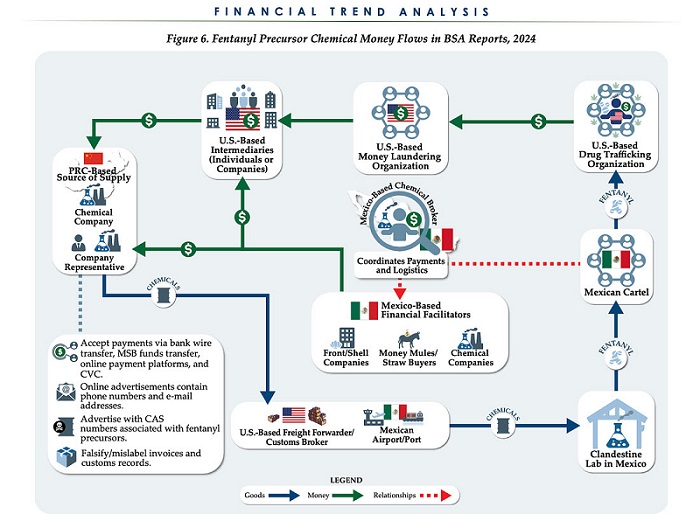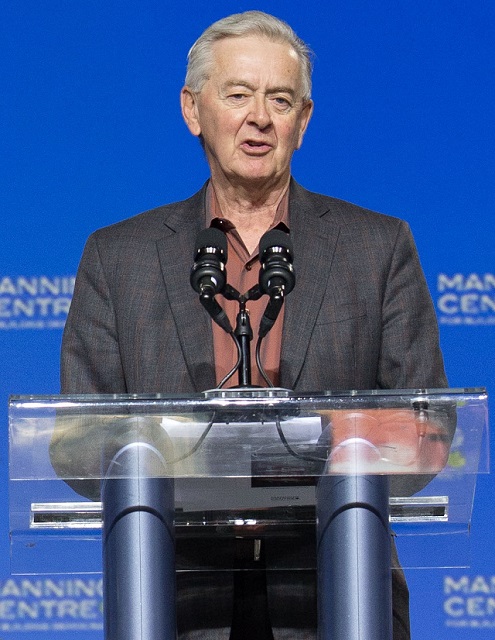Alberta
Alberta Budget 2024 – Health, Education, and Affordability announcements

Putting Albertans and Alberta families first
Budget 2024 is a responsible plan that puts Albertans and their families first by investing in strong health care, a modern education system and supports to keep life affordable.
Alberta’s government will ensure that the services and supports Alberta families rely on will be there for them. Budget 2024 continues to prioritize the delivery of high-quality, reliable health services across the province, with funding to continue planning the stand-alone Stollery Children’s Hospital, attract family physicians to rural areas and add more mental health and addiction facilities.
“With Budget 2024, we are ensuring that our province remains the best place to live and raise a family. We are investing in programs and services like new school builds, improved access to doctors and affordable housing to help Albertans stay healthy and build a successful future for themselves and their families.”
Budget 2024 highlights – Health care
- $475 million to modernize Alberta’s primary health care system, including:
- $200 million over two years to improve access to family physicians.
- $10 million for primary health care initiatives in Indigenous communities.
- $15 million to further develop a compensation model for nurse practitioners.
- $6.6 billion for physician compensation and development, up from $6.1 billion in Budget 2023.
- $1 billion over three years to transform the continuing care system to shift care to the community, enhance workforce capacity, increase choice and innovation, and improve the quality of care within the continuing care sector.
- $287 million over four years, part of a bilateral agreement with the federal government, for new mental health and addiction facilities, as well as for targeted supports for children and youth, adults and Indigenous communities.
- $62.4 million over three years to create two rural health professional training centres and expand physician education.
- $20 million over the next three years, including $17 million in new funding, to continue planning for a stand-alone Stollery Children’s Hospital.
- $35 million in capital funding over the next three years to purchase new emergency medical services vehicles and ambulances, upgrade the existing fleet and acquire additional equipment.
- $10 million over the next three years to create additional mental health professional spaces in post-secondary schools.
- $1.55-billion total expense to continue building the Alberta Recovery Model and ensure anyone suffering from the deadly disease of addiction or facing mental health challenges has an opportunity to pursue recovery.
“In Budget 2024, Alberta’s government is continuing to prioritize the delivery of high-quality, reliable health services across the province. This year’s record investment of $26.2 billion in health care will help us continue toward our goals of improving primary health care, adding capacity, reducing wait times, growing the workforce and advancing the Healthcare Action Plan.”
“Budget 2024 gives hope to those suffering from the deadly disease of addiction or facing mental health challenges. We are proud to invest in the Alberta Recovery Model and provide life-saving addiction treatment and care for those in need.”
Budget 2024 invests in a bright future for Alberta students with new and modernized schools, learning supports for students of all abilities and post-secondary programs to help build a skilled workforce.
Budget 2024 highlights – K-12 and post-secondary education
- $1.9 billion in capital funding over the next three years for planning, design or construction of new and modernized school projects across the province. This includes $681 million in new funding for 43 priority projects that will create 35,000 new or modernized student spaces.
- A total of 98 school projects are in various stages of the planning, design and construction process in 2024.
- $842 million in new operating funding over the next three years to further support enrolment growth, bringing additional enrolment-based funding to more than $1.2 billion over the next three years to enable schools to hire more than 3,100 education staff.
- More than $1.5-billion operating expense funding for educational learning supports for vulnerable students, children with specialized learning needs and other students requiring additional supports.
- $26 million over the next three years in additional funding for Program Unit Funding (PUF). PUF will total $209 million in the 2024-25 fiscal year.
- $103 million in capital funding over three years to increase modular classroom spaces to address the most urgent needs for additional student spaces across the province.
- $55 million in capital funding starting in 2025-26 for the University of Calgary’s multidisciplinary hub to add 1,000 spaces in science, technology, engineering and math (STEM) programs.
- $63 million in capital funding over the next three years for Olds College to renovate and expand student spaces in the WJ Elliot Building.
- $43 million in capital funding over the next three years for NAIT’s trades and technology learning facility.
- $13 million in capital funding over the next three years for Red Deer Polytechnic to create a new space to help businesses conduct applied research.
“The Alberta Advantage is back and booming, and people from across Canada and around the world are once again flocking to our incredible province. This of course puts added pressures on our schools, and our government is ready to help. Budget 2024 will support 43 new school projects to create and update 35,000 more student spaces. We’re providing $842 million in new funding to help our school boards hire more than 3,000 teachers and educational staff over the next three years. We will also boost funding to vulnerable students by increasing funding to the PUF program by $26 million.”
“Demand for skilled trades workers and graduates from STEM programs is projected to increase as our economy continues to grow and diversify. That’s why Alberta’s government is making targeted investments in post-secondary institutions to create more opportunities for students in high-demand fields of study.”
Although inflation is expected to ease this year, many families are still struggling with high grocery and utility costs. Budget 2024 helps keep life affordable and supports Albertans most affected by inflation.
Budget 2024 highlights – Affordability
- $717 million in capital grants to give Albertans and families access to more affordable housing, in line with Stronger Foundations – Alberta’s 10-year strategy designed to increase affordable housing supply and supports for Albertans.
- $355 million for the Alberta Child and Family Benefit to provide lower-income families with benefits, an increase of $31 million from last fiscal year.
- $980 million in savings for Albertans in 2024-25 because of indexation of personal income taxes.
- Budget 2024 formalizes the schedule to phase in a new personal income tax bracket on the first $60,000 of income, which would save individual taxpayers up to $760 per year once the tax cut is fully implemented.
- 25 per cent discount for seniors on personal registry services and medical driving tests, scheduled to come into effect in 2024-25.
- $38-million increase to operational funding for the Seniors Lodge, Social Housing and Specialized Housing and Rental Assistance programs in 2024-25.
- $22 million increased operating expense over the next three years to index foster, kinship and other caregiver rates, which will support stronger foundations for children in care and provide them with the care and protection they need for a brighter and secure future.
“With each strategic investment in affordable housing, reducing homelessness and supporting our seniors and people with disabilities, we are strengthening our communities and empowering vulnerable Albertans to thrive and succeed.”
“Our government is helping make life easier and more affordable for Alberta families. By helping foster caregivers increase stability for children and youth in care, and ensuring survivors of domestic and sexual violence have the resources they need to heal, we’re enabling connections that will lead to a brighter future for Alberta families.”
Budget 2024 is a responsible plan to strengthen health care and education, build safe and supportive communities, manage the province’s resources wisely and promote job creation to continue to build Alberta’s competitive advantage.
Alberta
Made in Alberta! Province makes it easier to support local products with Buy Local program

Show your Alberta side. Buy Local. |
When the going gets tough, Albertans stick together. That’s why Alberta’s government is launching a new campaign to benefit hard-working Albertans.
Global uncertainty is threatening the livelihoods of hard-working Alberta farmers, ranchers, processors and their families. The ‘Buy Local’ campaign, recently launched by Alberta’s government, encourages consumers to eat, drink and buy local to show our unified support for the province’s agriculture and food industry.
The government’s ‘Buy Local’ campaign encourages consumers to buy products from Alberta’s hard-working farmers, ranchers and food processors that produce safe, nutritious food for Albertans, Canadians and the world.
“It’s time to let these hard-working Albertans know we have their back. Now, more than ever, we need to shop local and buy made-in-Alberta products. The next time you are grocery shopping or go out for dinner or a drink with your friends or family, support local to demonstrate your Alberta pride. We are pleased tariffs don’t impact the ag industry right now and will keep advocating for our ag industry.”
Alberta’s government supports consumer choice. We are providing tools to help folks easily identify Alberta- and Canadian-made foods and products. Choosing local products keeps Albertans’ hard-earned dollars in our province. Whether it is farm-fresh vegetables, potatoes, honey, craft beer, frozen food or our world-renowned beef, Alberta has an abundance of fresh foods produced right on our doorstep.
Quick facts
- This summer, Albertans can support local at more than 150 farmers’ markets across the province and meet the folks who make, bake and grow our food.
- In March 2023, the Alberta government launched the ‘Made in Alberta’ voluntary food and beverage labelling program to support local agriculture and food sectors.
- Through direct connections with processors, the program has created the momentum to continue expanding consumer awareness about the ‘Made in Alberta’ label to help shoppers quickly identify foods and beverages produced in our province.
- Made in Alberta product catalogue website
Related information
Alberta
Province to expand services provided by Alberta Sheriffs: New policing option for municipalities

Expanding municipal police service options |
Proposed amendments would help ensure Alberta’s evolving public safety needs are met while also giving municipalities more options for local policing.
As first announced with the introduction of the Public Safety Statutes Amendment Act, 2024, Alberta’s government is considering creating a new independent agency police service to assume the police-like duties currently performed by Alberta Sheriffs. If passed, Bill 49 would lay additional groundwork for the new police service.
Proposed amendments to the Police Act recognize the unique challenges faced by different communities and seek to empower local governments to adopt strategies that effectively respond to their specific safety concerns, enhancing overall public safety across the province.
If passed, Bill 49 would specify that the new agency would be a Crown corporation with an independent board of directors to oversee its day-to-day operations. The new agency would be operationally independent from the government, consistent with all police services in Alberta. Unlike the Alberta Sheriffs, officers in the new police service would be directly employed by the police service rather than by the government.
“With this bill, we are taking the necessary steps to address the unique public safety concerns in communities across Alberta. As we work towards creating an independent agency police service, we are providing an essential component of Alberta’s police framework for years to come. Our aim is for the new agency is to ensure that Albertans are safe in their communities and receive the best possible service when they need it most.”
Additional amendments would allow municipalities to select the new agency as their local police service once it becomes fully operational and the necessary standards, capacity and frameworks are in place. Alberta’s government is committed to ensuring the new agency works collaboratively with all police services to meet the province’s evolving public safety needs and improve law enforcement response times, particularly in rural communities. While the RCMP would remain the official provincial police service, municipalities would have a new option for their local policing needs.
Once established, the agency would strengthen Alberta’s existing policing model and complement the province’s current police services, which include the RCMP, Indigenous police services and municipal police. It would help fill gaps and ensure law enforcement resources are deployed efficiently across the province.
Related information
-

 Business2 days ago
Business2 days agoChina, Mexico, Canada Flagged in $1.4 Billion Fentanyl Trade by U.S. Financial Watchdog
-

 espionage2 days ago
espionage2 days agoEx-NYPD Cop Jailed in Beijing’s Transnational Repatriation Plot, Canada Remains Soft Target
-

 2025 Federal Election2 days ago
2025 Federal Election2 days agoBREAKING from THE BUREAU: Pro-Beijing Group That Pushed Erin O’Toole’s Exit Warns Chinese Canadians to “Vote Carefully”
-

 Daily Caller2 days ago
Daily Caller2 days agoTrump Executive Orders ensure ‘Beautiful Clean’ Affordable Coal will continue to bolster US energy grid
-

 Daily Caller2 days ago
Daily Caller2 days agoDOJ Releases Dossier Of Deported Maryland Man’s Alleged MS-13 Gang Ties
-

 2025 Federal Election2 days ago
2025 Federal Election2 days agoAllegations of ethical misconduct by the Prime Minister and Government of Canada during the current federal election campaign
-

 Energy2 days ago
Energy2 days agoStraits of Mackinac Tunnel for Line 5 Pipeline to get “accelerated review”: US Army Corps of Engineers
-

 Opinion2 days ago
Opinion2 days agoLeft Turn: How Viet Nam War Resisters Changed Canada’s Political Compass




